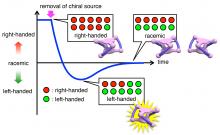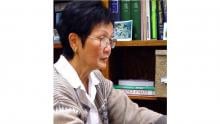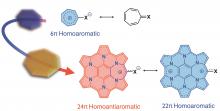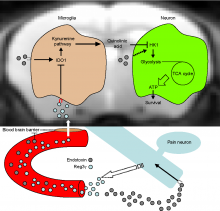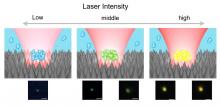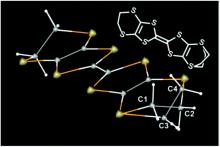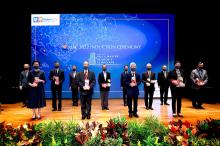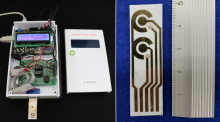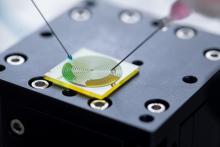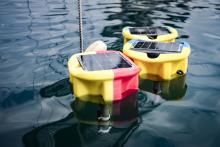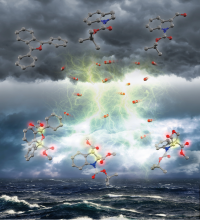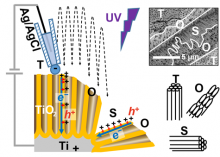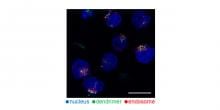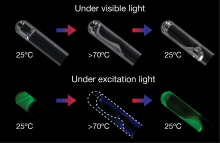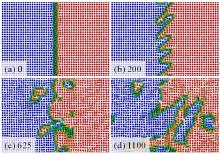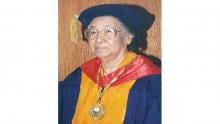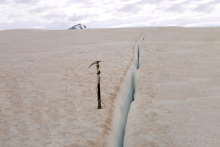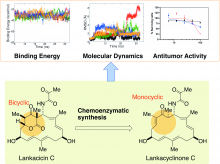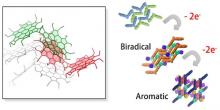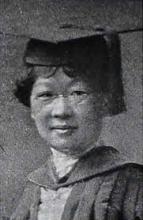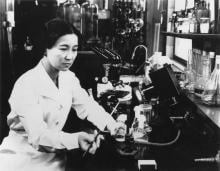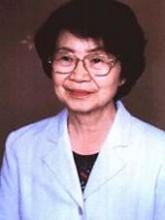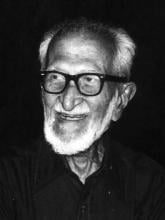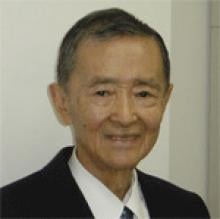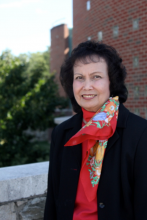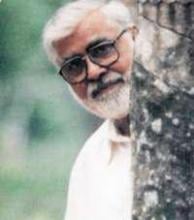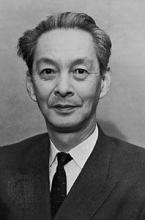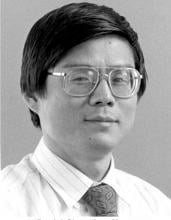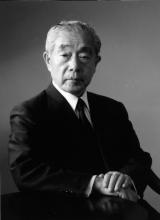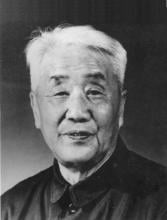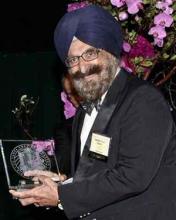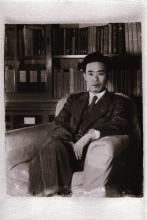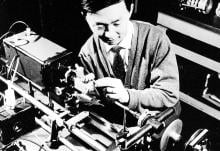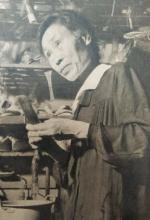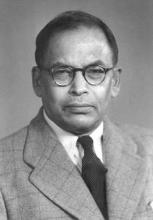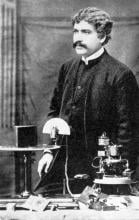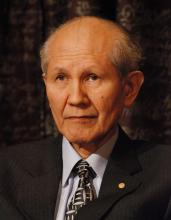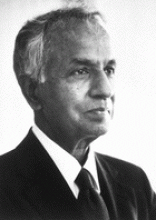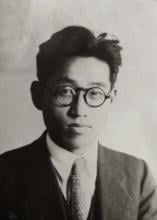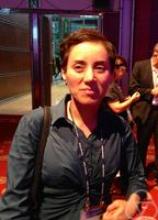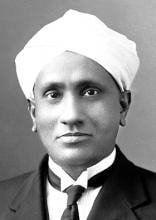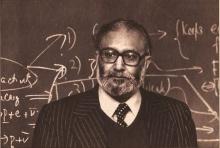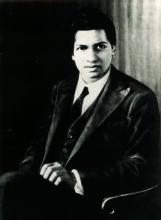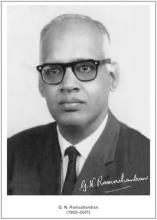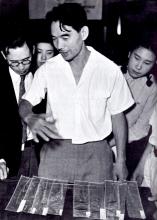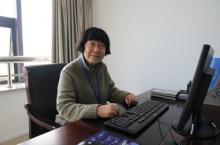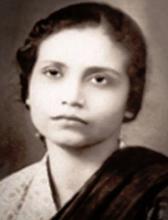Science
News
10 Mar 2022
Researchers at Kanazawa University report in Proceedings of the National Academy of Sciences a responsive molecular system that, through chemical reactions, inverses its chirality before becoming racemic.
10 Mar 2022
Giants in History: Roseli Ocampo-Friedmann (23 November 1937 – 4 September 2005) was a Filipino-American scientist whose research focused on cyanobacteria and microorganisms that inhabit extreme environments.
09 Mar 2022
- New HPHAC analogues with an embedded nonbenzenoid aromatic ring have been synthesized.
- The newly synthesized HPHACs exhibit multistep redox properties and their dicationic species showed an aromatic nature based on macrocyclic conjugation.
- Methylation on the nonbenzenoid aromatic ring resulted in the development of "antiaromaticity".
08 Mar 2022
A research team led by the National Institute for Physiological Sciences and joined by Hokkaido University explored the role of pain neurons in the regulation of endotoxic death. They found that peptide named Reg3γ acts as a pain neuron-enriched brain-targeted hormone that protects the host from endotoxic death.
08 Mar 2022
Scientists develop a method to genetically label neurons with a single gene of interest in mice by combining the anterograde transsynaptic spread of adeno-associated virus serotype 1 (AAV1) with intersectional gene expression. In two distinct circuits: the retina/primary visual cortex to the superior colliculus and the bilateral motor cortex to the dorsal striatum, injections of AAV1 expressing either Cre or Flpo recombinases and the Cre/Flpo double-dependent AAV into two upstream regions and the downstream region, respectively, were used to label postsynaptic neurons receiving inputs from the two upstream regions.
07 Mar 2022
A team at Japan’s Earth-Life Science Institute (ELSI), at Tokyo Institute of Technology (Tokyo Tech) is conducting evidence-based outreach to demonstrate why science communication training is so important, with an aim of encouraging other higher education and research institutions to follow its lead.
03 Mar 2022
Dr Hou Wai-kai, Associate Professor at the Department of Psychology (PS), The Education University of Hong Kong, has been elected a Fellow of the Association for Psychological Science (APS) for his outstanding contribution to the discipline.
03 Mar 2022
Giants in History: Gopalasamudram Narayanan Ramachandran (8 October 1922 – 7 April 2001) is best known for developing the Ramachandran plot to understand the structure of short chains of amino acids, known as peptides.
01 Mar 2022
Our visual processing is facilitated by spaces near the hand in a process known as hand proximity attention. Using a visual phenomenon called the flash-lag effect, researchers showed that proprioceptive information of a hand contributed to hand proximity attention.
28 Feb 2022
Scientists demonstrate an optical trapping technique using nanotextured black silicon that can efficiently trap polymer chains. By adjusting the laser intensity, these “optical tweezers” can control the florescence color emitted through a local concentration of a perylene-modified polymer solution. From a low intensity blue to high intensity orange, this reversible and fully remote technology can almost reach the entire RGB spectrum.
27 Feb 2022
With the aid of mathematics, materials chemistry enables dimension travel, unveiling that all properties of materials are governed by their dimension.
27 Feb 2022
A Detailed comparative study on the structures and electrical properties of related insulators and superconductors
25 Feb 2022
Induction into the Hall of Master Academic Clinicians is the highest accolade for clinical faculty at the SingHealth Duke-NUS Academic Medical Centre. Exemplary clinical faculty members are selected by a special committee for their subject matter mastery, academic excellence and exceptional mentoring for Duke-NUS students.
25 Feb 2022
Scientists have developed a prototype sensor that could help doctors rapidly measure adenosine triphosphate (ATP) and lactate levels in blood samples from patients, aiding in the rapid assessment of the severity of some diseases.
24 Feb 2022
A surprising tree-inspired discovery is helping scientists design surfaces that encourage different liquids to move in varying directions.
23 Feb 2022
Device designers at the University of Tokyo are developing cheap and accessible ways to monitor and explore the sea.
22 Feb 2022
Using electricity, a new method offers the possibility of recycling CO2 while also performing a notoriously difficult reaction, producing compounds potentially useful for drug development.
17 Feb 2022
Giants in History: Barry Paw (29 August 1962 – 28 December 2017) was a biologist and oncologist born in Myanmar who discovered several novel genes and their functions in red blood cells.
17 Feb 2022
In a recent study published in the journal ACS Catalysis researchers from Kanazawa University describe novel scanning electrochemical cell microscopy measurements to determine sites of photoelectrochemical activity in titanium dioxide nanotubes.
16 Feb 2022
This is a novel study that attempted to construct a pH-sensitive delivery system into T cells and their subsets using carboxy-terminal Phe- and CHex-modified dendrimers with different structures, i.e. PAMAM-CHex-Phe and PAMAM-Phe-CHex. The findings contribute to the development of nanoplatforms for direct delivery to T cells to control the functions of T cells, which play key roles in cancer immunotherapy. This is the first report on direct delivery into T cells using pH-sensitive DDS.
16 Feb 2022
Simulations have led to the fabrication of a polymer-DNA gel that could be used in tissue regeneration and robotics.
16 Feb 2022
Through numerical simulations, a researcher details the discovery of a new isolated skyrmion with a half-integer topological quantum number in the ferromagnetic phase of the magnetic quantum fluid Bose-Einstein condensate (BEC). The new skyrmion is generated by applying a spin current to a magnetic domain wall and it has an eccentric (off-center) spin singularity inside it.
11 Feb 2022
Helping elevate the careers of over 50 women researchers, the partnership has recognized prize-winning science from more than 20 countries in the Global South since 2013
11 Feb 2022
Low volcanic temperature ushered in global cooling and thriving dinosaurs, Broccoli compound induces cell death in yeast, A single molecule makes big splash in quantum mechanics, Dengue virus makes mosquitos bite more often, and Asia Research News: How it all began, all in the February's Editor's Choice
10 Feb 2022
Giants in History: Eminent Filipina scientist and educator Clara Lim-Sylianco (18 August 1925 – 23 July 2013) is remembered for her extensive research on mutagens – often-carcinogenic agents that permanently alter genetic materials such as DNA – antimutagens and bioorganic mechanisms.
03 Feb 2022
The Sanriku Coast - which includes present day Iwate and parts of Aomori and Miyagi - has been prone to tsunamis throughout its history. Analyses of tsunami deposits along the coast, however, haven’t always provided conclusive findings. Now, a research team has utilized a new radiocarbon dating method to clarify the region’s tsunami history and better understand the frequency at which these disasters occur.
02 Feb 2022
Researchers from Institute of Industrial Science, The University of Tokyo find that the occurrence of red snow is closely tied to the length of the snow melt season and new snowfall events
31 Jan 2022
Garden soil houses a variety of bacteria and their natural byproducts — including one that may help halt tumor growth. Lankacidins are molecules that can be isolated from Strepomyces rochei, a common bacterium in soil. In addition to antimicrobial properties, a type of lankacidins, called lankacidin C, can inhibit tumor activity in various cancer cell lines, including leukemia, melanoma, ovarian and breast cancers. Lankacidin C offers a potential foundation on which to design anticancer drugs, but its structure is complicated and difficult to manipulate, according to an international research group. The same group recently identified where antitumor activity is housed on the molecule and has now used that information to simplify lankacidin as a potential starting point to engineer treatments.
28 Jan 2022
Aromaticity of the Space Surrounded by Two Aromatic Rings
Events

05 Jan 2009
Thailand - This conference will cover a wide variety of topics related to environmental and water resources.
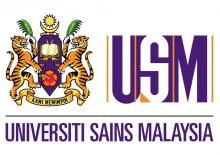
18 Jun 2008
The 2nd USM Penang International Postgraduate Convention 2008 will be held from the 18 - 20 June 2008 at Universiti Sains Malaysia. Postgraduate students and researchers are invited to attend. Early bird registration ends on 15 May 2008.

09 May 2008
Keio University and the British Embassy in Tokyo present KEIO 15O/ UK-JAPAN 2008 British Nobel Laureate Lecture Series
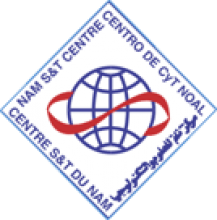
24 Jun 2008
Cleaner production involves persistent approach to prevent pollution, reduce the use of energy, water and material resources and minimize waste in the production process. This workshop will bring together experts to discuss diverse environmental strategies to increase eco-efficiency and minimize energy consumption.

26 Oct 2008
The congress aims to enhance the role of scientific research and technology development in addressing the knowledge gap in the Arab world and more.

05 May 2008
The Malaysian National Biotechnology Policy envisions that biotechnology will be the new economic engine for Malaysia. It is targeted that by 2020, this sector would create 280,000 jobs and make a 5% contribution to Malaysia’s GDP. This 3-day training will provide an understanding the steps needed from basic R&D to commercialisation

15 May 2008
Sarawak, Malaysia - Software engineering researchers throughout Malaysia as well as in the South East region will converge in Sarawak to share the latest formal methods.

02 Jul 2008
Tokyo, Japan - Bio Expo Japan is the ideal platform where suppliers of equipment & consumables will meet engineers, research-personnel & procurement managers of Japanese biotec-companies.

14 Jul 2008
CJP has the privilege to provide most authoritative Knowledge platform known as Global Jatropha Hi-Tech Agricultural Training Programme for Development of Sustainable Non-Food Jatropha Oil Crop Projects, Programmes and Priorities to Feed Biodiesel Industry Worldwide

16 Jun 2008
Busan, South Korea - Be part of the international community of scientists assembling in Busan, S Korea, to discuss research in geosciences.

28 Oct 2008
The Southeast Asia Urban Environmental Management Applications (SEA-UEMA) Project at the Asian Institute of Technology, in cooperation with the Chiang Mai Municipality and Mae Fah Luang University, will hold the International Conference on Sustainable Urban Environmental Practices on October 28-31, 2008.

15 Jun 2008
Brisbane, Australia - The conference will provide extensive networking opportunities to delegates and deliver the most relevant information on all matters concerning hydrogen and fuel cell technology.

24 May 2008
Kobe, Japan - the G8 Environment Ministers Meeting is held with the attendance of ministers of the G8 countries and the European Commissioner responsible for the environment.

11 Apr 2008
Boao, Hainan Province, China - The event will offer participants a chance to discuss the challenges and opportunities influencing the region’s environmental future.

14 Apr 2008
Jeju, S Korea - This occasion will be an excellent opportunity for many crop scientists from diverse regions of the world to interact with each other and to exchange scientific information.

17 Nov 2008
bioLOGIC India 2008, India's MOST influential biopharmaceutical event is the ONLY international platform in India where internaional and indian biopharmaceutical industry leaders will convene to discuss biopharmaceutical manufacturing opportunities and best production/operation practices.

19 May 2008
Antalya, Turkey - The program will include presentations by leading basic, clinical, and epidemiologic scientists on the latest discoveries in their areas.

27 Apr 2008
Shanghai, China - This is one of the most famous international environmental show with the largest scale and the longest history in China.

02 Apr 2008
Cebu, Philippines - It is expected to bring together an outstanding collection of speakers, scientists, clinicians, researchers and students from all over the country and the world to share their expertise.

07 Apr 2008
Geneva - This Symposium aims to take a first step towards more systematically matching the policy needs with the practical capacities to gather, analyze and extract key trends and findings from patent information.

02 Nov 2008
The most definitive antibody event in Europe will be coming to Asia in 2008. Asia Antibody Congress 2008 will bring together thought leaders from pharmaceutical, biotech & start-up companies, CRO/CMOs, consultants & regulatory authorities.

14 Apr 2008
BioMedical Asia 2008, taking place 14 - 17 April 2008 in Singapore, is the largest and most comprehensive biomedical event in Asia Pacific where top minds from every continent will convene.

15 Apr 2008
Kyoto, Japan - The symposia will bring together key specialists in the field, from top decision-makers to engineers, designers, planners, government officials, regulators, standards experts and others.

28 Apr 2008
Tehran, Iran - This international conference aims to promote discussions in all areas of catalysis between academia and industry.

20 Jul 2008
Kunming, China - BIT Life Sciences' WSA-2008 is a focused event for updating the current advances in worldwide R & D of Novel Antiviral Therapeutics.

16 May 2008
Shanghai, China - The event will bring together top researchers from Asian Pacific areas, North America, Europe and around the world to exchange research results and address open issues in all aspects of bioinformatics and biomedical engineering.

07 Apr 2008
Hanoi, Vietnam - Key ocean-oriented governments, nongovernmental organizations, and industry are being invited, as well, to play a pivotal role in the organization of the Conference and the dissemination of its outputs.

31 Mar 2008
Bangkok, Thailand - The climate change talks will convene sessions, during which Parties need to advance the Bali Road Map agreed last December.

02 Apr 2008
Hanoi, Vietnam - Vietnam to launch Vinasat, the Southeast Asian country's first telecoms satellite.

24 Jun 2008
This workshop will be instrumental in bringing together the experts to discuss diverse environmental strategies targeted to cause increase in eco-efficiency and minimizing energy consumption in their respective regions / sub-regions.
Giants in history
Chinese biochemist Chi Che Wang (1894 - 1979), one of the first Chinese women to study abroad, advanced to prominent research positions at American institutions including the University of Chicago and the Northwestern University Medical School.
Ruby Sakae Hirose (1904 – 1960) was a Japanese-American scientist whose research contributed significantly to our understanding of blood clotting, allergies and cancer.
Chinese electron microscopy specialist Li Fanghua (6 January 1932 – 24 January 2020) facilitated the high-resolution imaging of crystal structures by eliminating interference.
Sálim Moizuddin Abdul Ali (12 November 1896 – 20 June 1987), commonly referred to as the Birdman of India, was the first person to conduct systematic surveys of birds from across India.
Haisako Koyama (1916 – 1997) was a Japanese solar observer whose dedication to recording sunspots – cooler parts of the sun’s surface that appear dark – produced a sunspot record of historic importance.
Michiaki Takahashi (17 February 1928 – 16 December 2013) was a Japanese virologist who developed the first chickenpox vaccine.
Toshiko Yuasa (11 December 1909 – 1 February 1980) was the first Japanese female physicist whose research on radioactivity shed light on beta decay – the process in which an atom emits a beta particle (electron) and turns into a different element.
Angelita Castro Kelly (1942-2015) was the first female Mission Operations Manager (MOM) of NASA. She spearheaded and supervised the Earth Observing System missions during its developmental stage.
Malaysia’s first astrophysicist, Mazlan binti Othman (born 11 December 1951) was instrumental in launching the country’s first microsatellite, and in sending Malaysia’s first astronaut, Sheikh Muszaphar Shukor, into space.
Known as Mr. Natural Rubber, chemist and researcher B. C. Shekhar (17 November 1929 – 6 September 2006) introduced a number of technical innovations that helped put Malaysia’s natural rubber industry on the world map.
Shinichiro Tomonaga (31 March 1906 – 8 July 1979), together with Richard Feynman and Julian Schwinger, was awarded the Nobel Prize in Physics in 1965, for their contributions to advance the field of quantum electrodynamics. Tomonaga was also a strong proponent of peace, who actively campaigned against the proliferation of nuclear weapons and promoted the peaceful use of nuclear energy.
South Korean theoretical physicist Daniel Chonghan Hong (3 March 1956 – 6 July 2002) achieved fame in the public sphere through his research into the physics of popcorn.
Japanese chemist Kenichi Fukui (4 October 1918 – 9 January 1998) was the first Asian scientist to be awarded the Nobel Prize in Chemistry. Together with Roald Hoffman, he received this honour in 1981 for his independent research into the mechanisms of chemical reactions.
Chinese palaeontologist, archaeologist and anthropologist Pei Wenzhong (January 19, 1904 – September 18, 1982) is regarded as a founder of Chinese anthropology.
Physicist Narinder Singh Kapany (31 October 1926 – 4 December 2020) pioneered the use of optical fibres to transmit images, and founded several optical technology companies. Born in Punjab, India, he worked at a local optical instruments factory before moving to London for PhD studies at Imperial College. There, he devised a flexible fibrescope to convey images along bundles of glass fibres.
Japanese physicist Ukichiro Nakaya (1900-1962) made the world’s first artificial snowflakes. He started his research on snow crystals in the early 1930s at Hokkaido University, where there is an unlimited supply of natural snow in winter. By taking over 3,000 photographs, he established a classification of natural snow crystals and described their relationship with weather conditions.
The field of solid-state ionics originated in Europe, but Takehiko Takahashi of Nagoya University in Japan was the first to coin the term ‘solid ionics’ in 1967. ‘Solid-state ionics’ first appeared in 1971 in another of his papers, and was likely a play on ‘solid-state electronics’, another rapidly growing field at the time.
Charles Kuen Kao (Nov. 4, 1933 to Sept. 23, 2018) was an engineer who is regarded as the father of fibre optics. His work in the 1960s on long distance signal transmission using very pure glass fibres revolutionized telecommunications, enabling innovations such as the Internet.
Chika Kuroda (24 March 1884 – 8 November 1968) was a Japanese chemist whose research focussed on the structures of natural pigments.
Motoo Kimura (13 November 1924 – 13 November 1994) was a Japanese theoretical population geneticist who is best remembered for developing the neutral theory of molecular evolution.
Meghnad Saha (6 October 1893 – 16 February 1956) was an Indian astrophysicist best known for formulating the Saha ionization equation which describes the chemical and physical properties of stars.
Sir Jagadish Chandra Bose (30 November 1858 – 23 November 1937) was a scientist and inventor who contributed to a wide range of scientific fields such as physics, botany and biology.
Osamu Shimomura (27 August 1928 – 19 October 2018) was a Japanese organic chemist and marine biologist who dedicated his career to understanding how organisms emitted light.
Subrahmanyan Chandrasekhar (19 October 1910 – 21 August 1995) was an Indian astrophysicist who studied the structure and evolution of stars.
Joo-myung Seok (November 13, 1908 – October 6, 1950) was a Korean butterfly entomologist who made important contributions to the taxonomy of the native butterfly species in Korea.
Mathematician Maryam Mirzakhani (12 May 1977 – 14 July 2017) was the first and only woman and Iranian to date to win the Fields Medal in 2014 for her work on curved surfaces.
Sir Chandrasekhara Venkata Raman (7 November 1888 – 21 November 1970) was an Indian physicist who performed ground-breaking research in the field of light-scattering.
Mohammad Abdus Salam (29 January 1926 – 21 November 1996) was a theoretical physicist and the first Pakistani to receive a Nobel Prize in science.
Srinivasa Ramanujan (22 December 1887 – 26 April 1920) was a math prodigy and widely considered one of India’s greatest mathematicians. Despite having almost no formal training in mathematics, he made substantial contributions to mathematical analysis, number theory, infinite series and continued fractions.
Gopalasamudram Narayanan Ramachandran (8 October 1922 – 7 April 2001) is best known for developing the Ramachandran plot to understand the structure of short chains of amino acids, known as peptides.
Hitoshi Kihara (1893 – 1986) was one of the most famous Japanese geneticists of the 20th century. One of his most significant contributions was identifying sex chromosomes (X and Y) in flowering plants.
Chien-Shiung Wu (31 May 1912 – 16 February 1997) was an experimental physicist who made several important contributions to nuclear physics. Wu worked on the Manhattan Project – a top-secret program for the production of nuclear weapons during World War II and helped to develop a process for separating uranium into U235 and U238.
Meemann Chang (born 17 April 1936) is a Chinese palaeontologist who studied the fossils of ancient fish to understand the evolution of life. By examining fossils, she uncovered new insights on how vertebrates, animals with a backbone, migrated from the sea and became adapted to live on land.
Bibha Chowdhuri (1913 – 2 June 1991) was an Indian physicist who researched on particle physics and cosmic rays. In 1936, she was the only female to complete a M.Sc. degree at the University of Calcutta.
Lin Lanying (7 February 1918 – 4 March 2003) was a Chinese material engineer remembered for her contributions to the field of semiconductor and aerospace materials. Lanying was born into a family who did not believe in educating girls and she was not allowed to go to school.
Japanese geochemist Katsuko Saruhashi developed the first method and tools for measuring carbon dioxide in seawater



